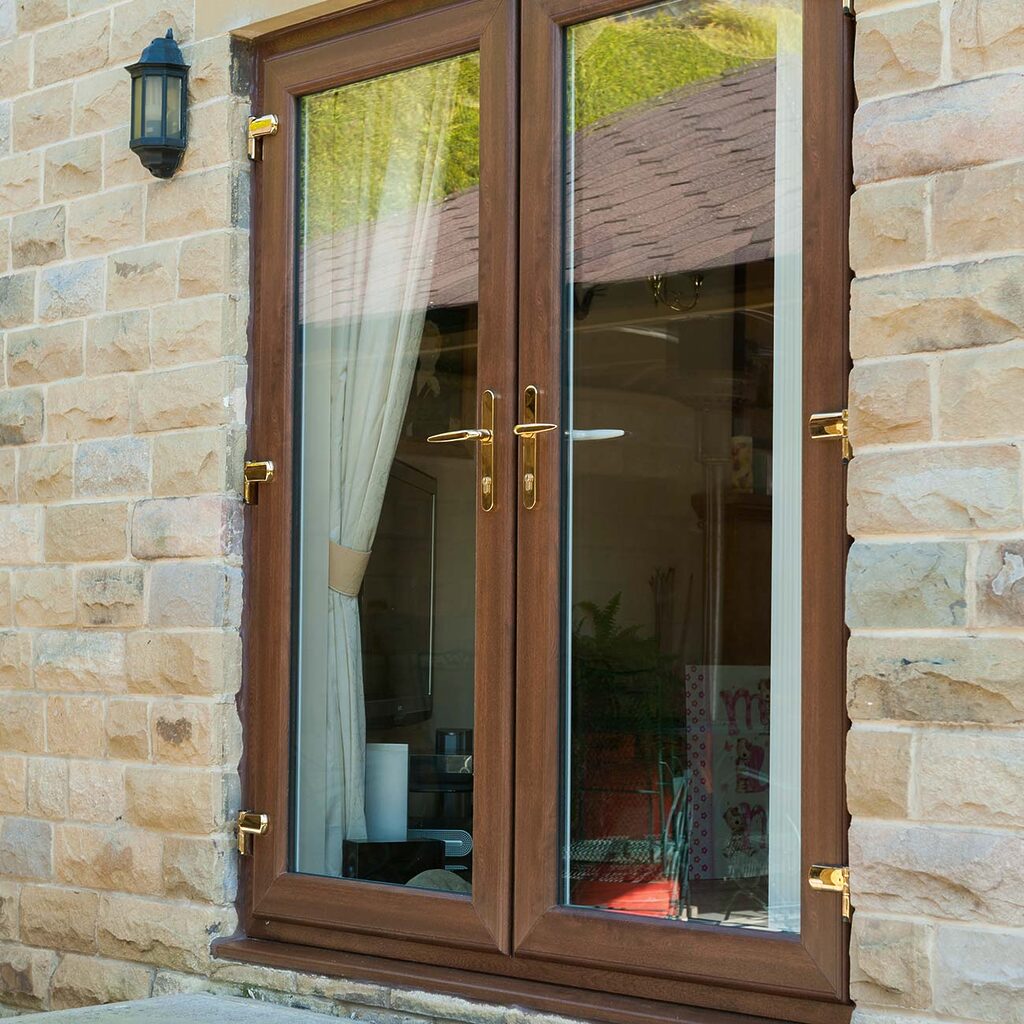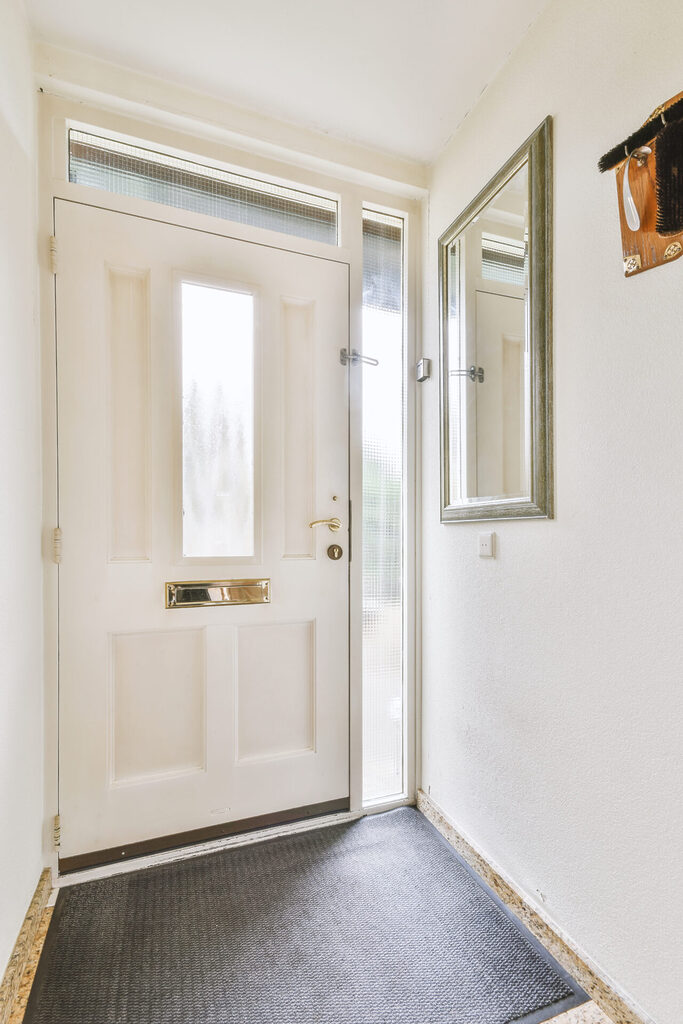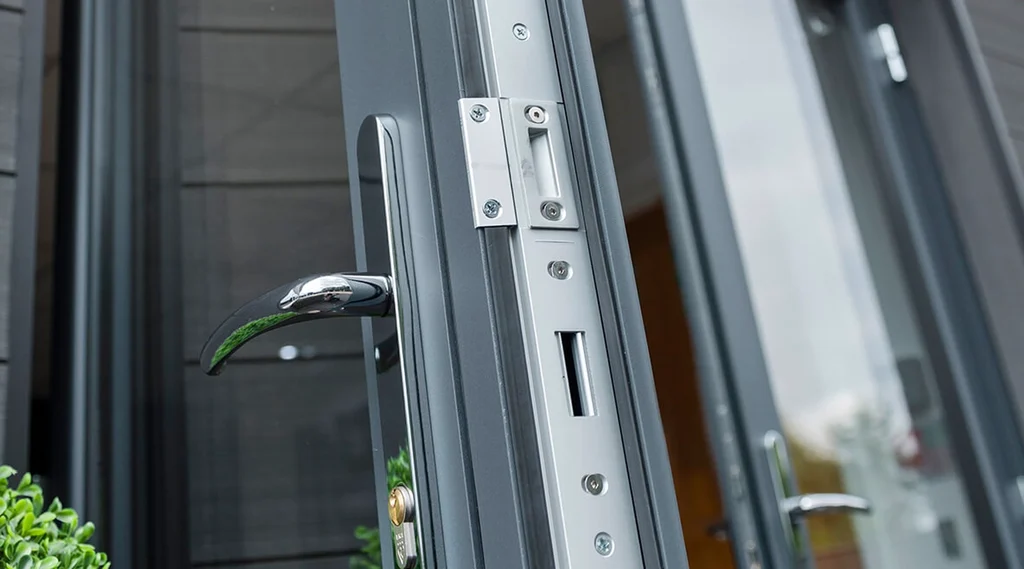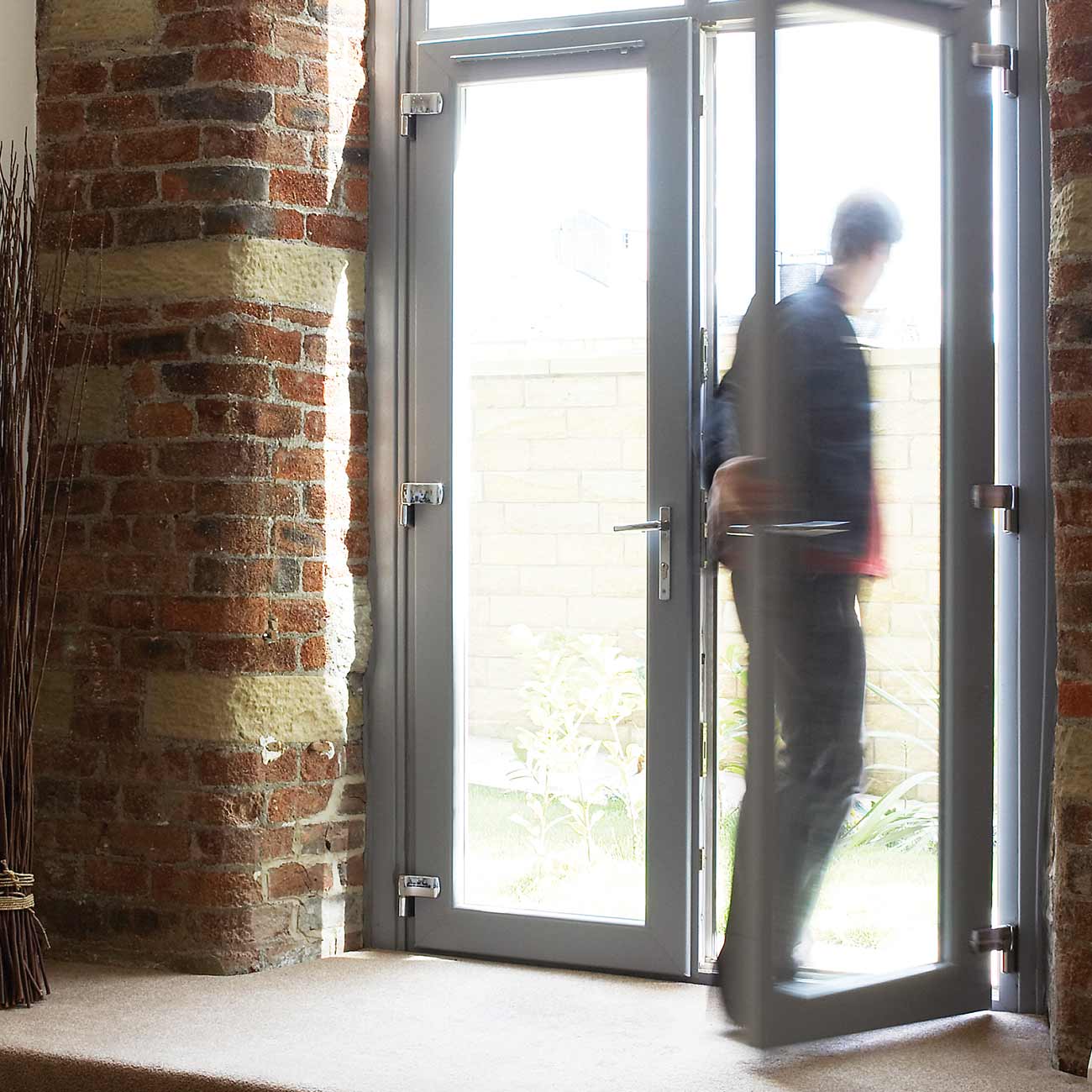Last Updated on 22 April 2025 by Tia Ellahi
Let’s talk about the no-fuss favourite of the front door world—the PVC door.
You might not think too much about your door, but it does a lot of heavy lifting. It keeps your home secure, helps with energy efficiency, and adds to your kerb appeal too.
And when you pick the right one, it should do all of that with zero maintenance fuss. That’s exactly where PVC doors come in.
From smart front entrances to practical back doors, PVC doors are a practical, budget-friendly choice that homeowners across the UK rely on.
Whether you’re upgrading your entranceway, replacing a tired door, or simply planning a home refresh, this guide is packed with everything you need to make an informed, confident decision.
We’ll walk you through the benefits, features, styling options, and insider tips—so you’ll know exactly why a PVC front door might just be your home’s unsung hero.
What You’ll Learn in This Article:
- What makes PVC doors so popular with UK homeowners
- Why they’re a cost-effective choice without cutting corners
- Where you can use them—from front to back and everything in-between
- A breakdown of PVC door bottom panels and how they function
- Style, security and thermal performance benefits
- Maintenance tips and how to keep yours looking sharp
- FAQs from real-life customers answered
Why Choose a PVC Door?
We get it—shopping for a new door doesn’t top your list of thrills. But here’s the good news: a PVC door is about as easy-going and dependable as they come.
Built from polyvinyl chloride (the same material as most modern windows), it’s lightweight, low-maintenance, and offers great insulation.
Plus, it costs less than composite or aluminium alternatives, without skimping on quality.

So if you’re thinking functionality over frills, a PVC front door might be exactly what you need.
Benefits of a PVC Door (Spoiler: There Are Loads)
- ✅ Low Maintenance – A wipe with soapy water and you’re sorted.
- ✅ Budget-Friendly – They’re a cost-effective solution that still looks sharp.
- ✅ Thermally Efficient – Keeps draughts out, warmth in, and bills down.
- ✅ Secure – Fitted with multi-point locks and reinforced frames.
- ✅ Customisable – Available in white, grey, woodgrain, black, and more.
Upgrade with reinforced PVC door bottom panels to protect high-traffic areas from daily knocks.
Where Do PVC Doors Work Best?
Honestly? Almost anywhere. These doors are nothing if not versatile:
Main Entrances
Yes, even your front door. PVC doors now come in a wide range of styles including those with decorative glazed panels and stylish hardware. You can enjoy great curb appeal while benefitting from thermal efficiency and low maintenance.
Back Doors
Ideal for kitchens, conservatories, or garden access. A PVC back door is practical, easy to clean, and holds up well against constant use. Choose from half-glazed or fully solid panels depending on your privacy needs.
Utility Rooms and Porches
These areas get lots of foot traffic, and PVC doors are more than up to the job. Durable, resistant to scuffs and scrapes, and easy to maintain, they’re the go-to solution when you need function first without compromising on look.
French Doors
Perfect for connecting your living space to the outdoors. PVC French doors are popular in family homes and extensions because they let in plenty of light while offering secure, weatherproof performance. Add sidelights or decorative glass to elevate the look further.

Design Options: Simpler Doesn’t Mean Boring
- Glazed panels – Frosted, decorative or clear options for natural light
- Raised or flat PVC door bottom panels – Choose for aesthetics or durability
- Colour options – White, black, anthracite grey, Chartwell green, and more
- Hardware upgrades – Chrome handles, letterplates, numerals, and more
PVC Door Panels Explained
Let’s talk about the humble PVC door bottom panel. It’s not just filler:
- Adds structural integrity
- Provides thermal insulation
- Offers an impact-resistant lower area
- Can be solid or feature decorative glazing
Ideal for doors seeing a lot of action—from family back doors to utility rooms.
PVC vs Composite Doors: What’s the Difference?
Cost and Value
Choosing between a PVC door and a composite door often comes down to your priorities and budget. PVC doors are a more affordable option upfront.
They offer excellent value for money while still providing good thermal performance, durability, and style.
Composite doors, on the other hand, come at a higher price point but are often favoured for their extra durability and high-end finish.
Maintenance
When it comes to maintenance, both options are easy to care for.
PVC doors require very little upkeep—just an occasional clean with soapy water will keep them looking fresh.
Composite doors are also low maintenance but may need a little extra care to maintain their appearance over time.
Thermal and Sound Insulation
Insulation is strong in both options, though composite doors tend to edge ahead slightly with thicker cores and more advanced materials that provide superior heat and sound insulation.
That said, modern PVC doors can still achieve excellent energy ratings and help reduce your energy bills.
Durability and Lifespan
In terms of lifespan, a well-maintained PVC door can last around 20 to 30 years, while composite doors may extend beyond that, often boasting a 25 to 35-year life expectancy.

Ease of Installation
If you’re after something lightweight and easy to install yourself, a PVC door is often the better bet. Composite doors are heavier and generally require professional fitting due to their weight and complexity.
Lead Times
And if time is of the essence? PVC doors usually have shorter lead times compared to composite options, which may be made to order and take longer to manufacture.
Want a deeper dive? Read our composite door comparison.
Maintenance Tips: Keep It Looking Fresh
- Clean monthly with soapy water
- Avoid abrasive pads or chemical cleaners
- Lubricate hinges and locks yearly
- Inspect and replace seals when needed
- Use white PVC restorer for scuffs if required
Security Features of a PVC Door
Home security matters, and PVC doors come with advanced protection built in:
- Multi-point locking system with steel hooks and deadbolts
- Anti-snap cylinders available
- Internally beaded glazing
- Reinforced frames and sashes
- PAS24 and Secured by Design compliance options

Did you know? 67% of burglars enter through a door. Security shouldn’t be optional.
Style It Your Way: Colour & Hardware
Modern PVC exterior doors come in:
- White, black, grey, woodgrain and bespoke colours
- Traditional panel designs or minimalist flush options
- Choice of chrome, gold, satin and black handles
- Letterplates, spy holes and knockers for the finishing touch
What Makes PVC Doors Eco-Friendly?
Our Eurocell PVC doors contain 40% post-consumer recycled content and help reduce your carbon footprint through exceptional insulation (U-values as low as 1.0 with triple glazing).
Built to last and recyclable at end-of-life, it’s the green option you didn’t know you needed.
Make the Right Choice Today: Speak to Our Team or Get an Instant Price
PVC doors are the reliable, budget-friendly, stylish solution for every UK home.
Whether you’re fitting a front door on your forever home or replacing a back door that’s seen better days, PVC gives you everything you need—without the faff.
Call our expert team on 01642 309 576 or get an instant quote online at GFD Homes to take the first step.
PVC Door FAQs
Can you paint a PVC door?
Technically yes, you can paint a PVC door, but it’s not always recommended. You’ll need to use a specialist PVC primer and exterior-grade paint. However, painting can affect the warranty, so always check with the supplier first. If you want a specific colour, it’s better to choose a door that’s foiled or coloured during manufacturing.
How much does a PVC door cost?
A standard PVC door price typically ranges from £400 to £900 depending on style, glazing, colour and hardware choices. Fully installed options may cost more, while supply-only doors are more budget-friendly. You can get an instant quote tailored to your needs online.
How do I adjust a PVC door if it’s not closing properly?
If your PVC door is catching or feels misaligned, it may need a hinge adjustment. Most PVC doors allow for minor lateral and vertical tweaks using an Allen key.
It’s best to consult the manufacturer’s instructions or call a professional if unsure.
Are PVC doors weatherproof?
Yes, modern PVC doors are designed to withstand the UK climate. They come with sealed frames, multi-point locks, and durable gaskets to prevent draughts and water ingress, keeping your home warm and dry all year round.
Looking for more inspiration? Check out these articles..
- Changes to Building Regulations for Windows & Doors as of June 2022
- uPVC Door: Everything You Need to Know Before Choosing One
- Blinds for Patio Doors: The Sleekest Way to Style & Simplify Your Space
- French Doors: A Timeless Classic – Everything You Need to Know
- Trade PVC Door: looking for trade prices? Visit our trade site, The Trade Village.
